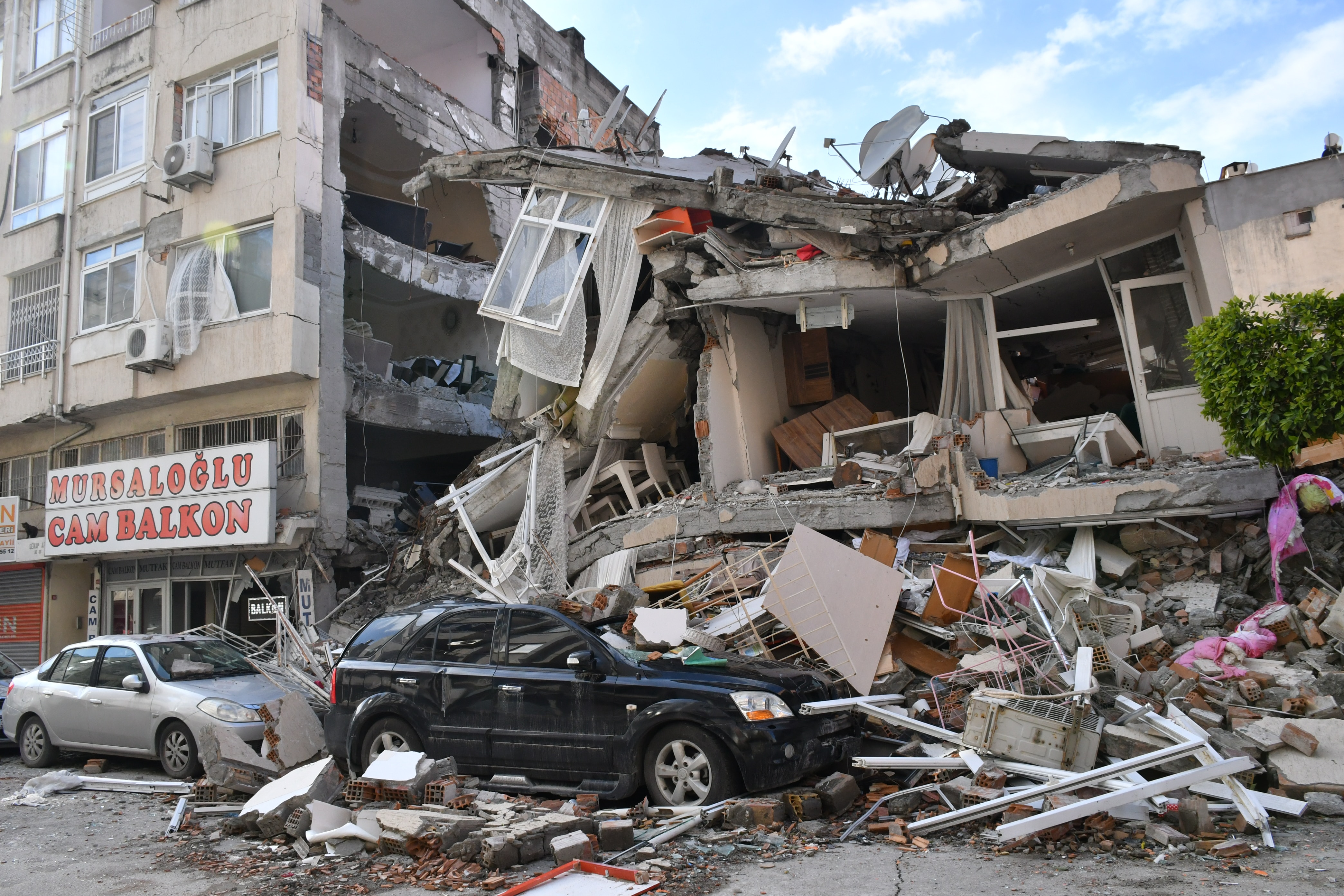Media release
From:
Earth sciences: Seismic signals may help improve forecasting for some large earthquakes
Unique seismic signals may be detected months to years before some large earthquakes, such as those preceding the 2023 magnitude 7.8 Kahramanmaraş Earthquake in Türkiye and also strongly felt in Syria, suggests a Nature Communications paper. The authors suggest that the development of earthquake warning systems would require more local and regional detection networks, as well as the monitoring of secondary faults, accompanying the main rupturing faults. The findings may improve our ability to improve the forecasting of some future large earthquakes.
Despite the urgent social-economic need to warn people and protect critical infrastructure, short term prediction of earthquake magnitude, time, and location is currently not possible. In some cases, the processes leading to an earthquake may have an extended duration of months to years, which can be monitored and potentially recognized. However, tracking these processes and identifying seismic signals as indicators of an upcoming large earthquake remains challenging. On 6th February 2023, a high magnitude earthquake struck the East Anatolian Fault Zone causing widespread damage and casualties in Türkiye and Syria. The rupture started at a secondary fault, and then propagated to the main fault.
Patricia Martínez-Garzón and colleagues found that there was an acceleration in the seismic event rates and larger energy release starting from approximately 8 months prior to the 2023 Kahramanmaraş earthquake, organized in clusters within 65 km of the epicenter. Although the main rupture occurred on a fault and in a region previously identified to have a very high seismic hazard potential, the preparatory signals took place both on the main fault and on a secondary fault, which had previously received little attention. Although some large earthquakes may display a monitorable preparation phase, the authors note that, owing to the large number of variables, recognizing such signals and using them for mid-term earthquake forecasting remains challenging.
The findings highlight the challenges of detecting the preparation and nucleation phase of large earthquakes. A full understanding of the preparatory phenomena would be necessary for the development of future warning systems, the authors suggest. More comprehensive earthquake monitoring together with long-term seismic records may improve our ability to recognize earthquake preparation processes from other regional deformation transients.
Expert Reaction
These comments have been collated by the Science Media Centre to provide a variety of expert perspectives on this issue. Feel free to use these quotes in your stories. Views expressed are the personal opinions of the experts named. They do not represent the views of the SMC or any other organisation unless specifically stated.
Dr Annemarie Christophersen, Hazard and Risk Scientist, GNS Science, comments:
This paper studies in detail the seismicity leading up to the 2023 Mw 7.8 Turkey-Syria earthquake as another piece in the puzzle to understand whether earthquakes are predictable. Such case histories are important for improving our understanding of processes that lead up to the occurrence of a major earthquake. However, as the authors point out themselves, apparent earthquake nucleation processes vary between different events, and it is difficult to distinguish preparatory processes from other observations. Thus, intermediate-term earthquake warnings are not possible at this stage, and may never be.
We have a good understanding of where and how often earthquakes occur in the long-term. We capture this information in seismic hazard models. GNS Science publicly released the 2022 revision of the New Zealand National Seismic Hazard model (NZNSHM), which incorporates the latest understanding of earthquake science. The NZNSHM is globally unique in incorporating a medium-term earthquake forecast model for the next 20 years. This model is built on the observation that prior to a major earthquake, seismicity increases in an area around the future large earthquake, similarly as observed in the current case study. The best way to prepare for future earthquakes is to build well with the understanding of the latest science.
Dr Lauren Vinnell, Lecturer of Emergency Management, Joint Centre for Disaster Research, Massey University, comments:
Any research which advances our understanding of earthquakes is valuable. As the authors say, however, we are still a way off immediate-term earthquake “warnings” (their research deals with forecasting, which is notably different from warning).
If it were found to be possible to forecast large earthquakes in New Zealand, it would be important to communicate exactly what this means, and what it doesn’t mean, to the public. As we can see from how some people talk about weather forecasts, it would be important to make clear that forecasting is not the same as predicting. Assuming such forecasting could eventually be implemented in New Zealand, false positives, where an earthquake is forecasted but does not occur, could impact trust and perceived credibility in the forecast source, along with significant social and economic impacts of any measures which were taken in response to the forecast such as mass relocation.
We would also have to worry about “missed” earthquakes, where an earthquake occurs without being forecasted. One concern with earthquake forecasting, like earthquake early warning, is that some may assume that because we can forecast or warn for some earthquakes, then we can forecast or warn for them all. This might mean that people delay taking protective actions like drop, cover, and hold when they feel the ground start to shake because they assume it’s not an earthquake based on not having received a forecast or warning for it.
We already know that large earthquakes can and do happen in New Zealand, so the most important thing is to do what we can to be better prepared, now.



 New Zealand; International
New Zealand; International



